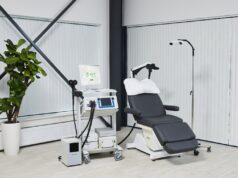 New research presented at the 2025 European Academy of Neurology (EAN) congress (21–24 June, Helsinki, Finland) has uncovered a notable link between nighttime heart rhythm and future health conditions—even in people with no obvious sleep problems.
New research presented at the 2025 European Academy of Neurology (EAN) congress (21–24 June, Helsinki, Finland) has uncovered a notable link between nighttime heart rhythm and future health conditions—even in people with no obvious sleep problems.
The study, which was conducted at the University Hospital of Bern’s (Bern, Switzerland) Department of Neurology, analysed 4,170 individuals over an observation period of 13,217 person-years and ultimately found that heart rate variability (HRV) during sleep can serve as a “powerful early warning sign” of future health conditions, including stroke, depression, and cognitive dysfunction.
Researchers found that certain HRV patterns were linked to future health conditions, as participants who later developed stroke often showed unusually high and erratic HRV while, in contrast, low HRV was common in those who went on to develop depression. Instances of high HRV with altered frequency patterns were also observed in individuals who later developed metabolic diseases, with cardiovascular and endocrine diseases being associated with high HRV as well, according to the researchers.
“HRV matters for brain and overall health because it reflects how well the body regulates itself—primarily through the activity of the autonomic nervous system”, explained Irina Filchenko (University Hospital of Bern, Bern, Switzerland), the lead author of the study. “This system controls vital unconscious processes, such as breathing, digestion and muscle tone, helping the body maintain balance, and adapt to internal and external demands.
“While many people are familiar with tracking sleep stages or total sleep time, nocturnal HRV provides a unique window into how the body functions during sleep. This is especially important because sleep is a critical time for many physiological processes underlying long-term health, such as cellular repair, memory consolidation, and the clearance of metabolic waste from the brain.”
Regarding the implications of these findings, the researchers believe that HRV could act as an early physiological marker, demonstrating subtle changes in body functioning before traditional symptoms or diagnoses appear. This could, in turn, open the door to prevention and early intervention for diseases like Alzheimer’s or stroke in which timely action can improve patient outcomes.
“Some participants had ‘normal’ sleep according to traditional criteria, with little sleep fragmentation and the expected balance of sleep stages,” Filchenko added. “However, HRV told a different story, picking up risks that the common sleep metrics missed. This suggests we need to rethink how we define and measure optimal sleep.”
According to the researchers, the findings of this study also raise the possibility of wearable technology being used to monitor HRV patterns over time. While current consumer devices vary in accuracy and interpretability, experts believe future improvements could allow people to track changes in HRV as part of regular health monitoring. The research adds to growing evidence that sleep is a “critical pillar of long-term health”, and that subtle patterns could offer a window of opportunity to prevent serious disease.
“The broader message is that sleep is not just a passive state of rest—it is an active, dynamic process that plays a vital role in maintaining long-term health, especially brain health,” Filchenko concluded. “Our findings reinforce the idea that primary prevention matters, and that health problems start long before the clinical symptoms appear.”










